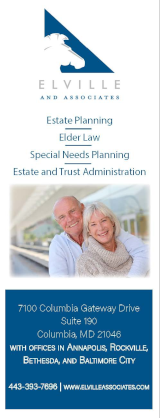Aid & Attendance – The “Secret” Benefit for Aging Veterans and their Spouses
Aid & Attendance – The “Secret” Benefit for Aging Veterans and their Spouses
By: Lindsay V.R. Moss, Esq., Senior Principal, Elville and Associates, P.C., Lindsay@elvilleassociates.com
Aid and Attendance Improved Pension Benefit (A&A), is a little known benefit offered through the Veteran’s Administration (VA) for Veterans and surviving spouses of Veterans. A&A can be used to cover the cost of in-home health care, or be used towards the cost of Assisted Living. To qualify, a veteran does not need to have suffered a service-related injury. They need only to have served one (1) day of a 90 day minimum active duty military service during a time of war. Additionally, they must require caregiving oversight for activities of daily living (such as dressing, toileting, bathing, etc.), and must fall within the established income and asset requirements. For 2022, the asset limit is $138,489 (with the house and any life insurance policies exempt as assets). The eligible wartime periods are:
- World War I (April 6, 1917 – November 11, 1918)
- World War II (December 7, 1941 – December 31, 1946)
- Korean conflict (June 27, 1950 – January 31, 1955)
- Vietnam era (February 28, 1961 – May 7, 1975 for Veterans who served in the Republic of Vietnam during that period; otherwise August 5, 1964 – May 7, 1975)
- Gulf War (August 2, 1990 – through a future date to be set by law or Presidential Proclamation)
(If the active duty occurred after September 7, 1980, one must have served at least 24 months or the full period that one was called up)
Other requirements include:
- Age 65 or older with limited or no income; or
- Totally and permanently disabled; or
- Receiving Social Security Disability Insurance; or
- Receiving Supplemental Security Income
A&A is a tax-free monetary benefit through the VA that can supplement a family’s income and enable the use of services that would otherwise be unaffordable.
For 2022, the maximum monthly pension rates and income limits (excluding healthcare expenses) are:
- Veteran – Income less than $24,610 per year, monthly pension – $2,050
- Veteran with one dependent – Income less than $29,175 per year, monthly pension – $2,431
- Surviving Spouse – Income less than $16,456 per year, monthly pension – $1371
- Veteran Couple – Income less than $39,036 per year, monthly income – $3253
Pension benefits are needs-based and the “countable” family income must fall below the yearly limit set by law. However, with the cost of in-home health care and Assisted Living increasing each year, it is often the case that the cost of one’s health care expenses exceeds the family income.
One important thing to consider is that the income limit does not include medical expenses. For example, if a Veteran and spouse have a combined income of $70,000 a year, but $60,000 of their yearly income is going towards the expense of an Assisted Living (which equates to $5,000 a month… a relatively low/average cost for an Assisted Living facility), then the Veteran would qualify for the full A&A amount of $2,431 per month. That’s about 50% of the cost of the Assisted Living! The additional income can make a huge difference in the quality of life for those receiving the benefit. It could also mean the difference between affording an Assisted Living Facility and needing to be institutionalized in a Skilled Nursing Facility (SNF) and qualify for Medicaid.
A&A can also be used towards the cost of in-home health care. For example, if a Veteran (or spouse) is living at home, but is racking up medical expenses utilizing a home health care agency, A&A can be used to supplement the cost. It can even be used to pay the adult child(ren) (or other family members) of a Veteran or spouse, if they are providing care for their parent, and a valid caregiver agreement is in place.
On October 18, 2018, the VA restructured the way they compute assets. Prior to 2018, there was no “lookback” period. Since the institution of the new VA Rules in 2018, the VA requires a 3-year lookback period for all assets and expenditures. Similar to the Medicaid 5-year lookback period, the VA lookback period was instituted to ensure that Veterans/surviving spouses that were well over the maximum asset limit were not transferring or gifting away assets soley for the purpose of immediately qualifying for this monthly pension.
Though there is now a 3-year lookback period, there are still many ways to implement asset protection strategies in order to qualify for this benefit. Creating a VA Asset Protection Trust is key, especially if the sale of home is being contemplated.
There are several documents that are needed to start the application process. The application requires, among other documents, a copy of the Veteran’s DD-214 (discharge paperwork), a medical evaluation from a physician, proof of current medical expenses, net worth and income information, and documentation of current out-of-pocket medical expenses.
Lindsay Moss, Esq. is a VA Accredited Attorney through the Veteran’s Administration, trained in navigating the intricacies of the VA system. Call her at 443-393-7696 with any questions about VA A&A.





